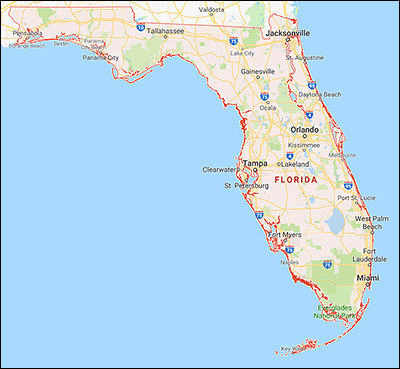By Jim Ellis — Friday, Dec. 8, 2023
House
CA-20: Ex-Speaker McCarthy to Resign — With the California candidate filing deadline looming today, former House Speaker Kevin McCarthy (R-Bakersfield) announced that he will not seek re-election to a 10th term and is leaving Congress at the end of the year. The outcome is not surprising, and one many expected since his ouster as House Speaker two months ago. The McCarthy decision means 35 House seats are now open with seven coming from California alone.McCarthy’s Bakersfield-anchored district will remain safely in Republican hands, but the question remains as to whether a special election will be called. When the most recent California seat became vacant — San Diego’s Duncan D. Hunter resignation in early 2020 — Gov. Gavin Newsom (D) simply didn’t schedule a special election and the seat remained vacant for the better part of a year.
Since Newsom previously got away with this course of action, it is quite possible he will attempt to again hold the McCarthy seat in abeyance, particularly since the Republican majority is dwindling with the expulsion of Rep. George Santos and Rep. Bill Johnson’s (R-OH) pending resignation.
California’s 20th District draws a R+31 rating from the FiveThirtyEight data organization and is the safest Republican seat in this heavily blue state. Former President Donald Trump posted a 61-34 percent victory margin here over Joe Biden in 2020. For the regular election, seeing a double-Republican runoff evolve from the all-party jungle primary is a distinct possibility. The two leading potential contenders appear to be state Sen. Shannon Graves (R-Bakersfield) and Assemblyman Vincent Fong (R-Bakersfield).
NY-16: Primary Challenge Now Official — Earlier in the week, we reported that Westchester County Executive and former state legislator George Latimer had filed a congressional committee with the Federal Election Commission and was expected to officially declare his Democratic primary candidacy against two-term Rep. Jamaal Bowman (D-Yonkers). Wednesday, Latimer made his official announcement.
Several key primaries are evolving around the nation, and this challenge is a serious effort. Bowman, himself, came to Congress through unseating an incumbent, veteran Rep. Eliot Engel, in the 2020 Democratic primary, and now the tables may turn in 2024.
NY-17: Rep. Lawler Avoids Primary Challenge — Former Trump White House aide Bill Maloney, who was considering challenging freshman Rep. Mike Lawler (R-Pearl River) because he believed the congressman was not demonstrating sufficient loyalty toward Trump, now says he will not run. Rep. Lawler is likely to find himself in a very difficult general election campaign, thus making it necessary for him to have an uncontested primary campaign.
The FiveThirtyEight data organization rates NY-17 as D+7. The district, however, will likely change after a congressional map redraw, so it is likely this Hudson Valley seat will become even more Democratic. The Daily Kos Elections statisticians rank the seat as sixth most vulnerable in the Republican Conference, and is likely to become even more competitive post-redistricting.
TN-7: Disgraced Nashville Mayor Announces Against Rep. Green — Former Nashville Mayor Megan Barry (D), who resigned her position in disgrace as part of a plea deal for misuse of public funds to facilitate an extra-marital affair with a member of her security detail, on Wednesday announced that she will enter the 7th Congressional District Democratic primary. Should she win the nomination election, Barry would then challenge three-term Tennessee US Rep. Mark Green (R-Clarksville), chairman of the House Homeland Security Committee.
CD-7 is a safely Republican western Tennessee district that the FiveThirtyEight data organization rates as R+21. Former President Donald Trump carried TN-7 with a 56-41 percent victory margin. The Daily Kos Elections site ranks the seat as the 76th most vulnerable seat in the Republican Conference. Rep. Green was re-elected in 2022 with a 60-38 percent victory margin.
Governor
Utah: Another Gubernatorial Primary Challenger Emerges — Gov. Spencer Cox (R) is favored to win a second term next year, but he will first have to out poll now two intra-party opponents. In late October, state Rep. Phil Lyman (R-Blanding) announced his Republican primary challenge to Gov. Cox, and this week, state Rep. Brian King (R-Salt Lake City) also entered the race.
While Gov. Cox would be favored against multiple candidates on a primary ballot, the candidates will first enter the Utah Republican Party endorsement convention, which can send as many as two candidates to the primary ballot. Not entering the convention, which may be the route Gov. Cox chooses, a candidate would need to recruit 28,000 valid petition signatures in order to compete in the party primary. Expect Gov. Cox to prevail in the nomination process and for re-election next November.







